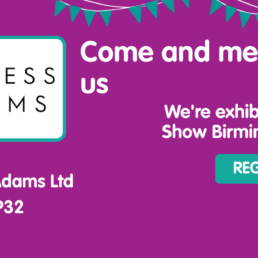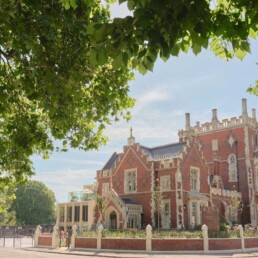Rukhsar has been with Carless + Adams for a few years but only recently joined us full time following the completion of her Masters. Her path in architecture is an interesting one so we interviewed her to find out more.
Rukhsar has been with Carless + Adams for a few years but only recently joined us full time following the completion of her Masters. Her path in architecture is an interesting one so we interviewed her to find out more….
Congratulations on your Masters! How has working with Carless + Adams in between studying helped crystalise your learnings?
Carless + Adams definitely helped to motivate, support and kept me learning throughout my course which is why I returned to them! I felt when I joined that I had no knowledge about the care industry despite having knowledge of architecture practises. Coming from University you think you are prepared for everything but getting the actual experience is fantastic. Being able to complete my 2 weeks of work experience with Carless + Adams at the beginning of my degree gave me a lot – the company was very different then with building surveyors also there. I was able to work with both sides of the business during that experience. Then when I graduated in 2018 for my Part 1 it was easy to come back to Carless + Adams as I’d enjoyed it so much during my work experience with them.
Carless + Adams is a great team and the work life balance is good. Comparing my experience to my Uni friends between Part 1 and Masters I feel that I had exposure to additional experience and learning during my time spent at Carless + Adams compared to my peers.
What do you feel is the most important factor in undertaking hands on work experience for architecture students?
Being able to experience different elements of architecture to help you determine which route you would like to go down to builds on everything you’ve learnt at University. I really enjoy the design side – from getting a brief, exploring options, starting the creative design and seeing the project to the end. Spending time with Carless + Adams and gaining that experience enabled me to try out all areas. We work as one connected team seeing the project over the course of its development life.
Working on design for care allows me to keep learning. Understanding dementia and the needs of residents has been an education for me. We all have had experience of care for relatives or elderly friends which it can be an emotional and personal learning, but the industry is so motivated to help. We went to the Care Show recently and saw other businesses developing technology and products to help people when they move into an integrated retirement community or care home, and it made me realise how many people are trying to make sure the elderly are cared and looked after as they should be. Having that awareness and being exposed to such developments make me feel so positive about the care industry and even more engaged in my work!
You received the Foster + Partners Prize for Technical Innovation in Design for your final year project. A great achievement! Can you tell us about this please?
I feel the reason my project stood out from others was as I focussed on using as many sustainable materials as possible. The Cow Village used products from the cows themselves as construction materials. I conducted a lot of research into the dairy industry and found that there is a huge amount of wasted milk and large numbers of calves being bred (and then slaughtered) to keep the milk in production. 16 million glasses of milk a day are poured down the drain from UK households with 10% from dairy farms.
The fact that we are making these cows produce milk and then not using it is so wasteful. In my design I developed eco-friendly construction techniques using whey insulation foam to create domes (milk by product) and bricks from cow dung. This means we were not upsetting the economy, staying sustainable and all things are biodegradable. Casein plastic was created from cows milk protein and used in cars in the last century but the use declined due to the arrival of petrol. Don’t you think its interesting that we have such innovations already and yet we don’t try and use them to move towards sustainability?
My project can be viewed here: https://openwestminster.london/open22-student/?uid=0dfb02010863b&v=one
Alongside your studying, you have been with Carless + Adams for some years, how have you seen the company evolve?
Through my time studying I’ve become both more confident in my designs and also critical at events happening around us, especially in terms of climate change and our carbon footprint. During the time I’ve been with Carless + Adams though Part 1, my Masters and now, I’ve seen their views on sustainability become more assertive to match their passion.
Our designs are able to influence and enhance people’s lives. At a public consultation recently, we were talking to a neighbour who was hoping to house her Mother in a care home we had put in for redevelopment. She said that she liked our design as it factored in the residents and their needs, combined with a sustainable design.
Technology is advancing at a staggering rate – what do you feel has positively impacted architecture in recent years?
Definitely. We have been incorporating renewable energy systems in our designs and sustainably designing the building itself while integrating technology that helps the residents and the care workers. Making sure the needs of residents are catered for is important and this comes from the use of technology and interior design – for example someone with dementia is more stimulated by sounds so this has been incorporated in our designs. This makes the environment more welcoming and tries to combat loneliness which we all know is a big factor in health and wellbeing for care home residents.
Considering design to combat isolation and encourage interaction has been helped by technology, for example the Portal that many residents have to connect with their families. Here are constant developments that we can use that help residents such as interactive touch tables in communal areas to have quizzes, select and listen to music and for brain training apps to keep minds active.
How do you think the care sector needs to adapt to become more sustainable?
I feel we need to investigate our relationship with animals and how we can build a connection back as feel they can help us with sustainable developments. We are all so separate to farms and what is happening there to produce our food and by products, but are not aware of how useful animals can be to us directly. Integrating farms into landscapes and closer to cities will start to make our engagement with food easier, reuse waste and enhance innovative bio-industries from this.
Thinking about our material choices, such as low carbon timber, sheep’s wool insulation plus using animals for therapy (especially non ‘traditional’ therapy animals such as chickens) will remove the divide between living and wildlife, and generally people will become more connected and aware of sustainability and the choices they make.
How has your experience with VR influenced your outputs as an architect?
Architects have a sense of scale when looking at designs which helps them to visualise in their mind a space, and now this can be experienced via VR to those who can’t always visualise how a building, rooms and furniture has been designed and how it can operate successfully. Therefore, this helps us to relate to the resident even more by connecting to their potential new home environment. We have recently experienced enhanced dementia training via VR which helped me to understand even further the confusion and potential falls someone can have and this will help my designs greatly.
Carless + Adams specialises in design for care homes and integrated retirement communities. What motivates you working in this sector?
The community aspect, social impact and making a difference to someone’s life. I’ve realised that designing a building is so much more than that – it can really make a difference to a family. Intergenerational designs are really exciting to me as feel that connection between young and old can benefit both of them….and create fun!
What is your favourite thing about working in Architecture?
Designing a building that will influence someone else’s life, which does give you a great deal of responsibility in your hands! We are also able to make a positive change on the environment, responding to climate change through the design process and a constructive social change too.
Design of a building needs to have awareness of what is going on and the architect has the responsibility to make a change. Families need to know they have made the right choice and their relative is in good hands. Architecture is such an interesting field and even after years and years of studying you can always still learn!
And your favourite thing about working at Carless + Adams?
The team! They are so incredibly supportive and knowledgeable. During my Part 1 and Masters I was able to contact senior experienced people at Carless + Adams for any question or critical feedback on my work without hesitation and feel that relationship is still there. Being able to work at Carless + Adams has built on my past experience with them and improved this.
Thanks Rukhsar for your time!


